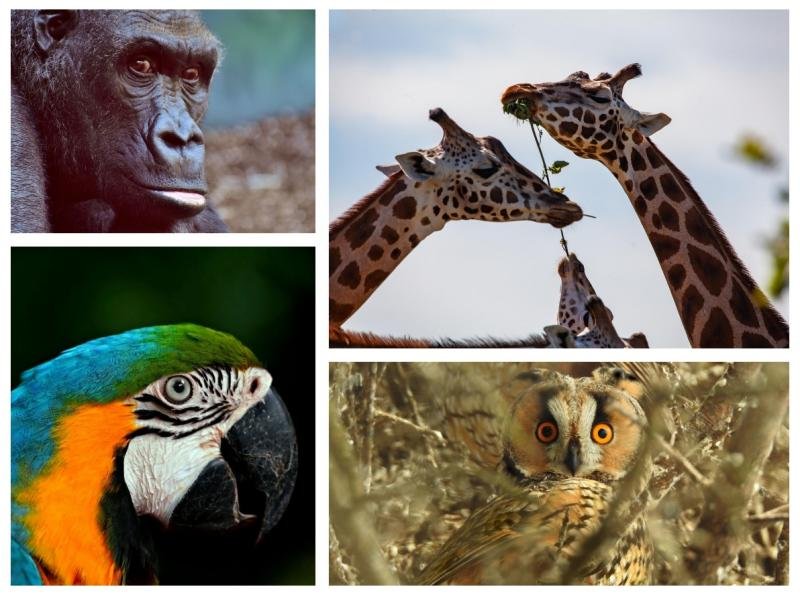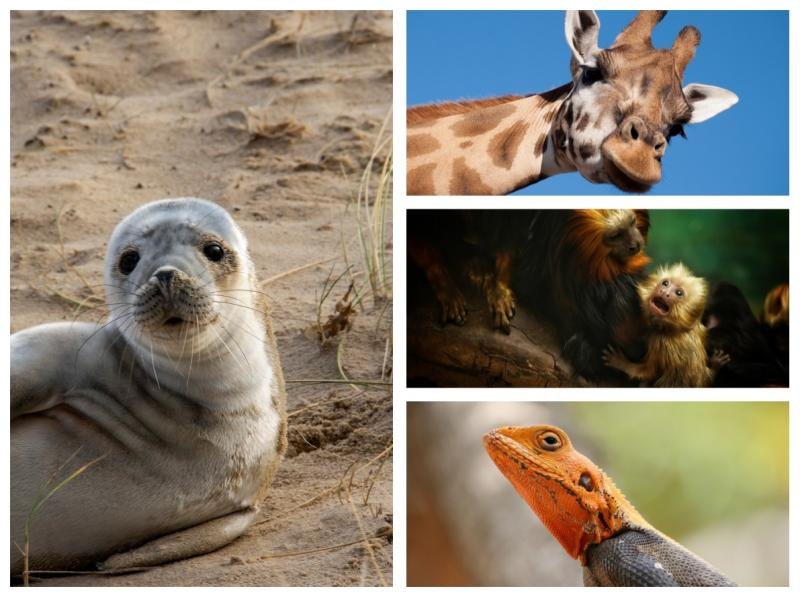Notícias do sector
What Are The Advantages of A Telephoto Lens When Photographing Wildlife?
Telephoto lens is a commonly used lens in photography. It has a long focal length and a narrow angle of view. It is particularly suitable for scenes that require long-distance shooting or highlighting the subject, such as wildlife photography, sports event photography, etc.
In wildlife photography, telephoto lenses have irreplaceable roles and advantages. Before understanding their advantages, we can first understand the main characteristics of telephoto lenses.
1.What are the main features of a telephoto lens?
(1)Long-distance shooting capabilities
Telephoto lenses usually have a focal length of more than 70mm, and hundreds of millimeters are also common. They can bring distant objects closer and are suitable for shooting scenes that are far away and difficult to get close to, such as wildlife, sports events, stage performances, etc.
(2)Narrow viewing angle
A telephoto lens has a narrower angle of view, typically between 10 and 30 degrees. This narrow angle of view allows it to focus on a specific part of the frame, reducing distracting background elements and making the subject stand out more, making it ideal for capturing details or close-ups.

(3)Shallow depth of field effect
Telephoto lenses can usually produce a shallow depth of field, making the subject clear and prominent, and the background blurred and soft. They are suitable for scenes such as portrait photography and artistic creation that need to highlight the subject.
(4)Compressed perspective
A telephoto lens can compress the image, making the distance between the foreground and background appear closer. It is suitable for shooting scenes with a strong sense of layering and creating a picture with more layering and depth. This effect is particularly obvious when shooting portraits and landscapes.
(5)Large weight and volume
Due to their complex optical structure, telephoto lenses are usually heavy and bulky, requiring the use of a tripod or stabilizer to ensure image stability. Some high-end telephoto lenses are also equipped with an anti-shake function to reduce the impact of shaking when shooting handheld.

In addition, telephoto lenses also have the characteristics of faster focusing speed, higher price, and less distortion, and can play an important role in various types of photography.
2.Advantages of telephoto lenses in wildlife photography
When photographing wildlife, telephoto lenses have significant advantages, mainly in the following aspects:
(1)Keep shooting safely from a distance
Wild animals are often sensitive to humans. A telephoto lens acts like an invisible observer, allowing photographers to shoot from a distance without disturbing or threatening the animals. The longer the focal length of a telephoto lens, the better it can capture close-ups of animals from a distance of hundreds of meters, avoiding disturbing their natural behavior.
This characteristic is particularly useful for photographing highly alert and difficult-to-approach wildlife, such as lions and grizzly bears. For example, when filming a group of African lions hunting, the photographer can use a 600mm telephoto lens to record clearly from 50 meters away, avoiding danger from approaching.
(2)Capture details and close-ups
The high magnification of a telephoto lens enables it to capture subtle features and expressions of animals, such as feathers, eyes, ears and other details, enhancing the visual impact. For example, a telephoto lens can capture the delicate texture of bird feathers, the eyes of birds of prey, the expressions of gorillas, etc., making the picture more story-telling.
Furthermore, the shallow depth of field created by a telephoto lens further emphasizes the subject, blurring and reducing background clutter, making the animal more expressive within the frame.

(3)Compress space and highlight the subject
The perspective effect of a telephoto lens compresses space, making distant backgrounds (such as mountains and trees) appear closer to the subject, allowing the animal to stand out from the clutter. This enhances the image’s compactness and visual impact, making it ideal for photographing expansive landscapes like grasslands and deserts.
For example, when using a telephoto lens with a focal length of 200mm or more to shoot a snow leopard, the snow-capped mountains in the background will blur into blocks of color, making the subject more focused.
(4)Quickly capture dynamic moments
Capturing dynamic moments is crucial in wildlife photography. Wildlife behavior is often swift and unpredictable, and a telephoto lens allows photographers to more accurately capture these fleeting moments. Telephoto lenses often feature fast autofocus, enabling them to quickly capture movements like running and leaping. This is crucial for capturing scenes like cheetahs in motion or birds in flight.
For example, through the rapid continuous focusing of a telephoto lens, photographers can capture wonderful moments such as animals hunting, playful interactions, or momentary gestures during migration.

(5)Reduce the impact of light limitations
Telephoto lenses often feature large apertures (such as f/2.8 or larger), which makes them more flexible when photographing wildlife in low-light environments. For example, using a telephoto lens allows photographers to use the large aperture to increase shutter speeds, thus avoiding blur caused by shaky hands or fast-moving animals.
(6)Adapt to various shooting environments
Telephoto lenses are suitable for a variety of shooting environments, from mountains and forests to grasslands and polar regions, helping photographers capture stunning wildlife photos. Furthermore, telephoto lenses are not only suitable for photographing wildlife, but can also be used to photograph other creatures such as birds and insects, and even for landscape photography. For example, a telephoto lens can capture details of distant mountains, rivers, or forests, while also highlighting the forms and behaviors of wildlife.
In short, telephoto lenses play an irreplaceable role in wildlife photography due to their advantages in long-distance shooting, detail capture, background blur, and space compression. By using telephoto lenses properly, photographers can capture the most natural and vivid moments of wildlife.

